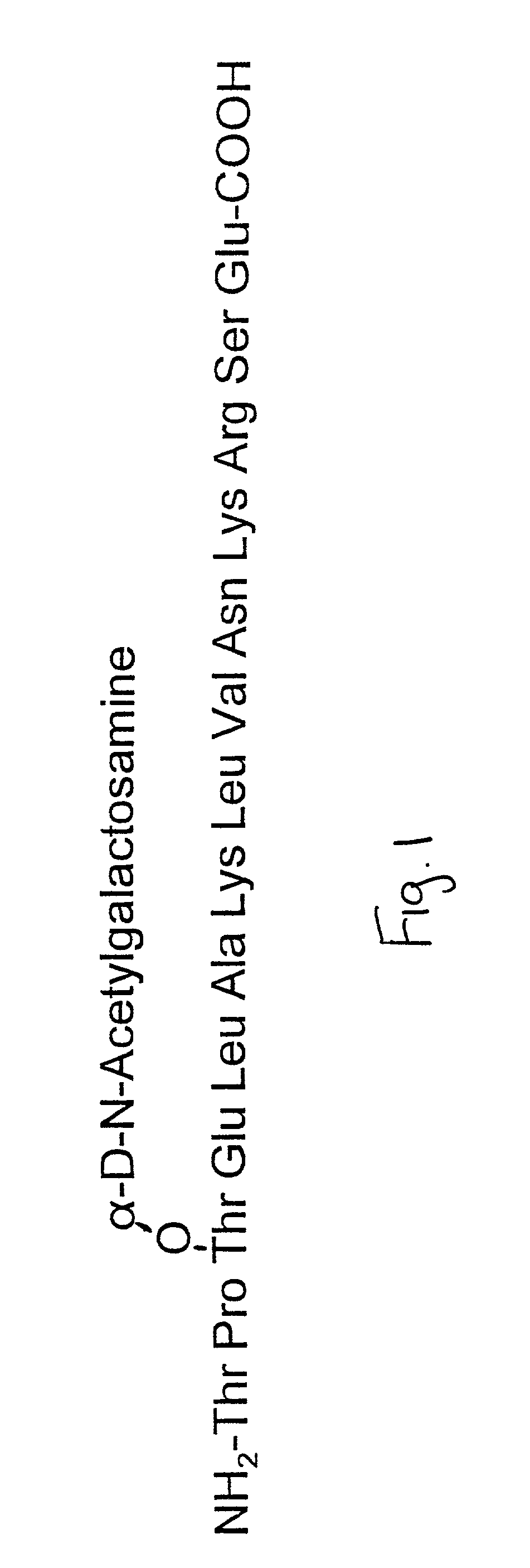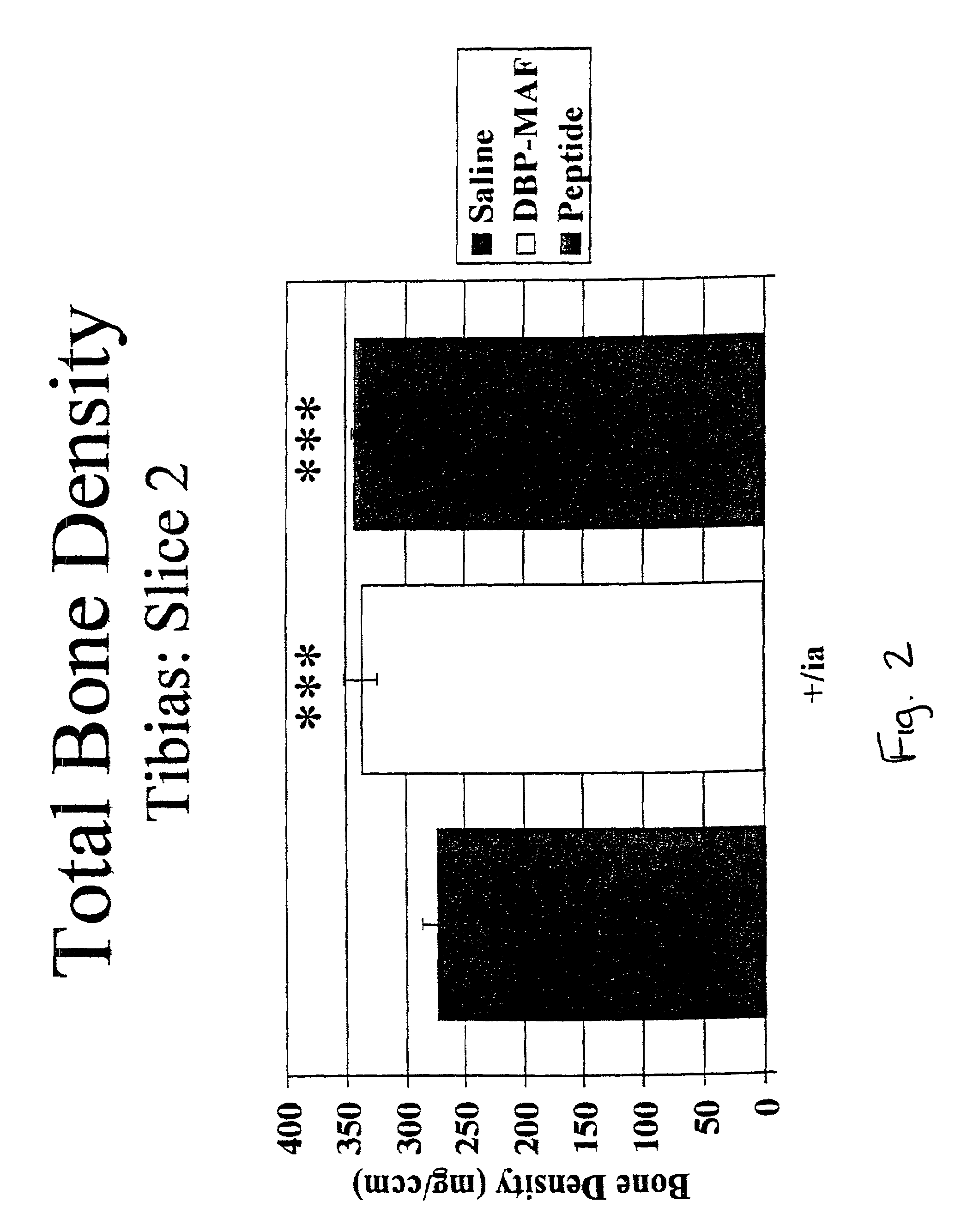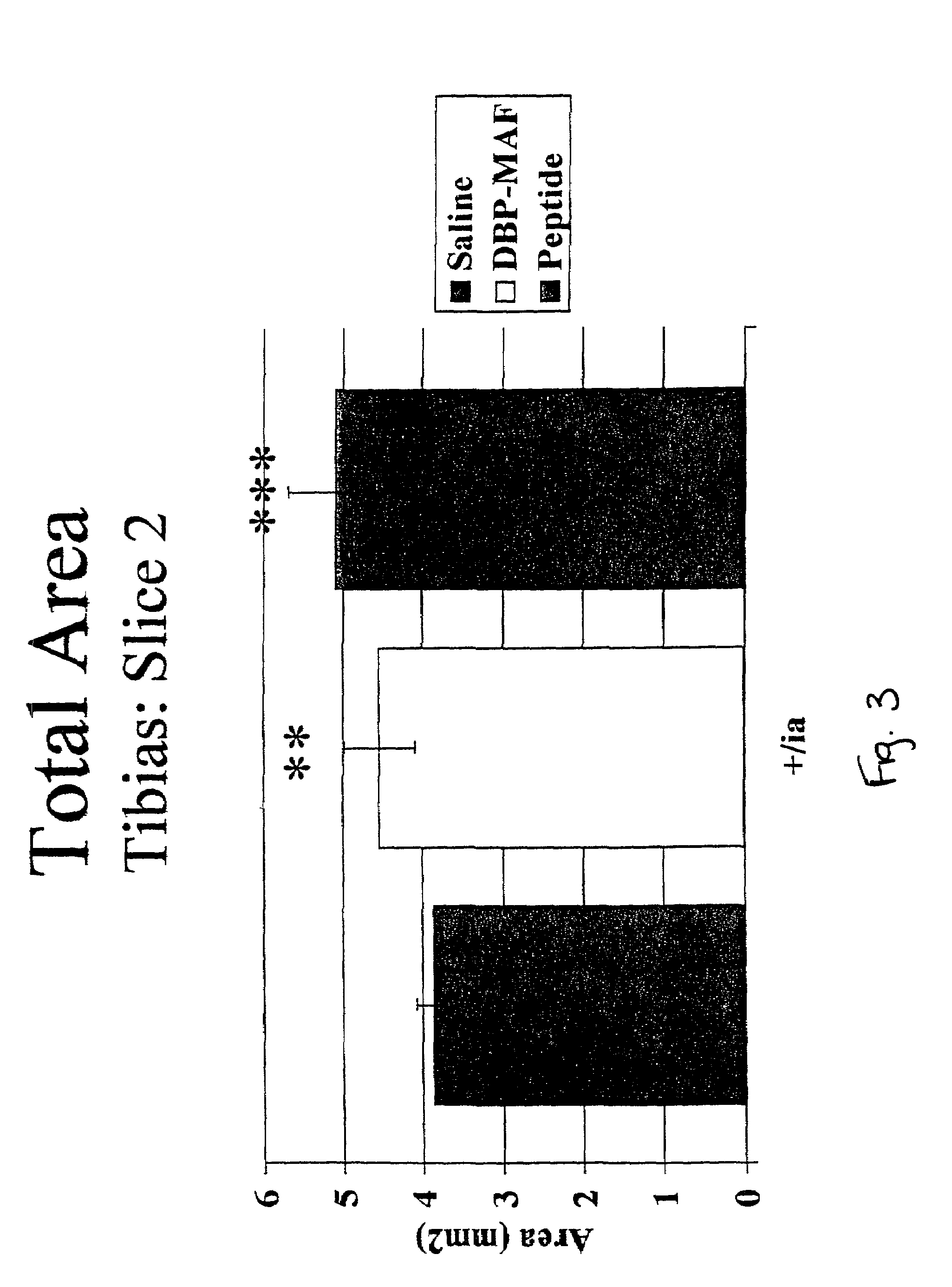Agents and methods for promoting bone growth
a technology of agents and methods, applied in the field of agents and methods for promoting bone deposition and growth, can solve the problems of imbalance between bone resorption (breakdown) and bone formation, bone loss, and small imbalance between bone resorption and bone formation processes, and achieve the effects of promoting bone growth, significant increase of the total surface area of representative bone slices, and potent effect on bone growth
- Summary
- Abstract
- Description
- Claims
- Application Information
AI Technical Summary
Benefits of technology
Problems solved by technology
Method used
Image
Examples
example 1
Systemic Administration of ADBP to Newborn Animals
[0072]ADBP, at a dosage of 2.0 ng / g of body weight, was administered by intraperitoneal injection into normal newborn rats every two days for two weeks.
example 2
Systemic Administration of fADBP to Newborn Animals
[0073]Glycosylated fADBP, at a dosage of 0.4 ng / g of body weight, was administered by intraperitoneal injection into normal newborn rats every two days for two weeks.
Results
[0074]The effect of the above-described treatments on bone density, bone circumference, and the rate of bone resorption were evaluated. Normal rats receiving saline injections served as controls.
[0075]After humane sacrifice, long bones were collected from rats subjected to agent treatment as described in Examples 1 and 2. The bones were evaluated using densitometry techniques with the Norland Medical Systems pQCT scanner. The densitometric parameters that were determined included:[0076]1. Total Content, which is the mineral content of the bone within a 1 mm slice.[0077]2. Total Density, which is the mean density of the total bone.[0078]3. Trabecular Content, which is the mineral content of the trabecular bone within a 1 mm slice.[0079]4. Trabecular Density, which...
example 3
Systemic Administration of fADBP (Without Sugar) to Adult Animals
[0090]Non-glycosylated fADBP, at a dosage of 0.4 ng / g of body weight, was administered by subcutaneous injection into normal adult rats every two days for two weeks. The effect of this treatment on bone density and DpD levels was assayed as described above. The results are shown in Table 2 below.
PUM
| Property | Measurement | Unit |
|---|---|---|
| body weight | aaaaa | aaaaa |
| body weight | aaaaa | aaaaa |
| porosity | aaaaa | aaaaa |
Abstract
Description
Claims
Application Information
 Login to View More
Login to View More - R&D
- Intellectual Property
- Life Sciences
- Materials
- Tech Scout
- Unparalleled Data Quality
- Higher Quality Content
- 60% Fewer Hallucinations
Browse by: Latest US Patents, China's latest patents, Technical Efficacy Thesaurus, Application Domain, Technology Topic, Popular Technical Reports.
© 2025 PatSnap. All rights reserved.Legal|Privacy policy|Modern Slavery Act Transparency Statement|Sitemap|About US| Contact US: help@patsnap.com



